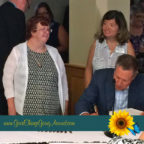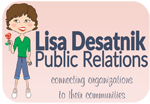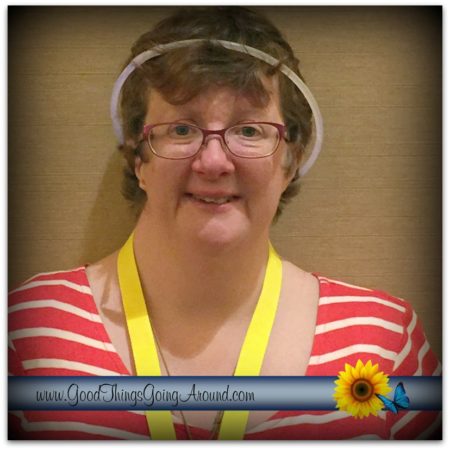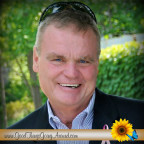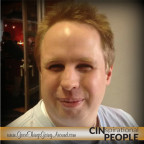Disability
Lessons Learned From Ohio HB 158
It is so important for us to recognize the profound impact our language has on others. Our choice of words can encourage, energize and inspire; or they can discourage, exclude and deflate.
We experience the impact in our work, our homes, our schools and our personal relationships. Consciously or unconsciously, what we say and how we are spoken 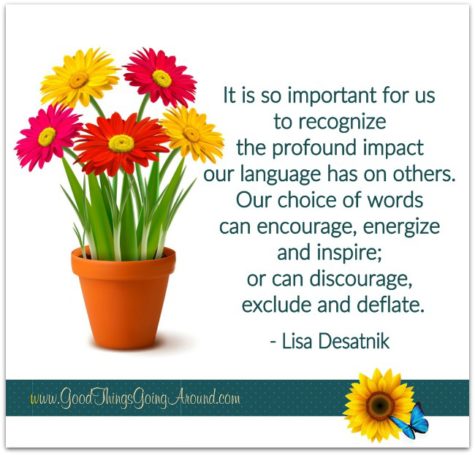 to influence our ability to succeed or fail as individuals, as a community.
to influence our ability to succeed or fail as individuals, as a community.
I have seen children raised in the most difficult of circumstances grow to be resilient leaders due in part to the positive role models in their lives who focused on strengths. I have seen flourishing workplaces where employees excel because they are working in a nurturing environment where management and colleagues understand the value of positive reinforcement. And I have seen people who do, think and say things differently with confidence and fortitude because the opinions, actions and yes, words, of those in their lives have fostered a sense of belonging, understanding, and ability.
For as long as I have been an adult, through all the many years that I have worked with disability related organizations, that I have simply lived and experienced relationships, I have disliked the words ‘mental retardation’. The words have a visceral effect on me. It just sounds derogatory and belittling to me, perhaps because of the horrible feeling I got in the pit of my stomach when I heard the abbreviation, ‘retard’. That same ugly feeling I get when I hear words referred to other groups of people aimed at knocking them down.
I recognize that to many, those words ‘mental retardation’ may conjure no negative or positive meaning. They are simply six syllables taught to describe a population.
Diana Mairose, an advocate support advisor for Hamilton County Developmental Disabilities Services, has been tirelessly working to change the vocabulary used to refer to people with disabilities. She is the major reason why the word ‘handicapped’ was removed from the blue accessibility signs locally and statewide. In 2009, she helped remove the words ‘mental retardation’ from the State of Ohio; however, not in the Ohio Revised Code…until last week. (You can read more about her in this post.)
In front of about 100 people – i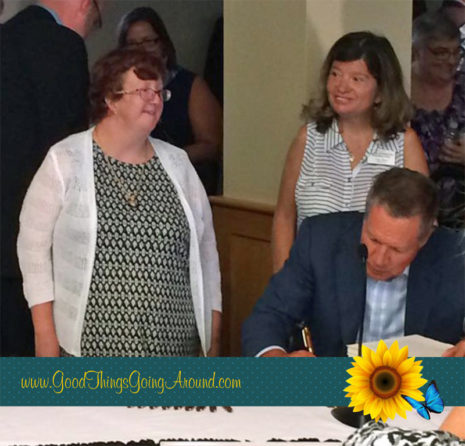 ncluding Diana – Governor John Kasich signed into law Ohio House Bill 158, which formally removes the MR phrase in the Ohio Revised Code, replacing it with the more respectful ‘intellectual disability’.
ncluding Diana – Governor John Kasich signed into law Ohio House Bill 158, which formally removes the MR phrase in the Ohio Revised Code, replacing it with the more respectful ‘intellectual disability’.
“It was a very honored occasion,” Diana told me. “I am really happy that the people in government can see how it will show respect to so many people we serve. Mental retardation are words we need to stop using all together.”
Now it is our turn, to make a conscious decision to stop using words that discourage, exclude and deflate people. And, instead, use our language to rise people up, energize, include and inspire them.
When we do that, we all will benefit.

Diana Mairose Inspires Inclusion
At 37, Diana Mairose may have a soft voice but it speaks loudly and with purpose. It is the vehicle behind which a confident, driven, empathetic, idea person collects believers of her cause. Sitting on the sidelines is not her thing. No, Diana’s friends, peers, co-workers, and public officials will tell you she is a force to be reckoned with when it comes to getting things done. What she gets done enhances lives, strengthens communities, and ensures people of their human rights.
Diana is an advocate support advisor for Hamilton County Developmental Disabilities Services (HCDDS), that promotes and supports opportunities for people with developmental disabilities to live, work, learn and fully participate in their communities. In a nutshell, what she does, she told me is, “help people to find their voice, and what they believe in and what they want to do in life.”
She has been referred to time and again as one of the best, most effective advocates in Ohio. She has spoken at conferences and events, in the community and before local, regional and statewide public officials; and she provides her peers with information and encouragement to have a voice…to be included.
Diana is also past president of the Ohio Self Determination Association (OSDA) and chair of Advocacy United, a group of professionals and advocates whose mission is to help move people with disabilities into places of power so their voices can be heard.
A driving force behind positive change
That seems to be the theme when it comes to Diana.
She has testified before President Obama’s Election Commission for accessible elections. On behalf of OSDA, she testified before an Ohio State Senate Committee last year about concerns that an amended House Bill would take away opportunities and rights of people with disabilities.
And she is the major reason for the removal of the word ‘handicapped’ from the blue accessibility signs local, and statewide. Diana told me, it was when Ohio changed the name from Mental Retardation Developmental Disabilities Services to simply Developmental Disabilities Services that spurred her quest to change those signs in public places and parking lots. It all began with the Hamilton County Commissioners around the time when the Banks new garage was opening. “I told them the importance of reading symbols and showing respect in the community,” she told me. “After that I took my advocacy idea to the next level. I asked the City of Cincinnati council members to vote yes for the City and for it to also be a budget neutral law. At that time I also helped other counties and cities to remove the word ‘handicap’ from Ohio, and spoke with Eric Kearney about introducing this bill to make it a law.”
That law took several years to happen, but it happened! “I really like the accessible symbol. Symbols help everybody everywhere,” Diana said. “It is a simple way to respect other people. My grandma is 102. Elderly, children and adults with disabilities, family members and friends benefit.
“Advocacy comes from ideas and hopes and dreams. When I see the accessible symbol I smile for a positive change in the state of Ohio.”
Diana has a lot of reasons to smile.
Art Beyond Boundaries Exhibits Abilities
If you have never visited 1410 Main Street in Cincinnati’s Over-the-Rhine, I encourage you to stop by. Inside is a space where imaginations and talents are showcased, where the world can be seen from the eyes of artists from diverse perspectives.
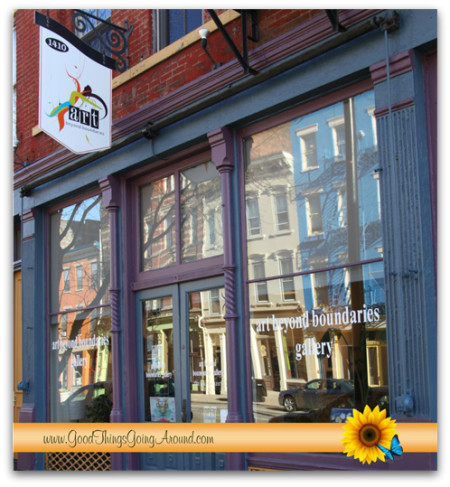 And, it is that diversity that sets this place apart from other art exhibition halls. Artists whose work is shown at Art Beyond Boundaries Gallery may have vision impairments or they may have near perfect eye sight. They may use a wheelchair or walk with their two legs. They may have a cognitive delay or mental illness or may be the person who got all As in school.
And, it is that diversity that sets this place apart from other art exhibition halls. Artists whose work is shown at Art Beyond Boundaries Gallery may have vision impairments or they may have near perfect eye sight. They may use a wheelchair or walk with their two legs. They may have a cognitive delay or mental illness or may be the person who got all As in school.
The Gallery began in December of 2005 when the Center for Independent Living Options (CILO), a nonprofit organization that breaks down barriers and promotes inclusion and independence of people who have disabilities, opened what was to be a one time show downtown as part of the Fine Arts Sampler Weekend. The show featured pieces from regional people within our community of different abilities. That one show turned into another, which turned into another and eventually led to CILO opening a permanent exhibition venue two years later and hiring James (Jymi) Bolden as its director.
Art Beyond Boundaries’ mission is to promote awareness and understanding of artists with disabilities. The Gallery has five or six shows a year that run six to eight weeks each. Its annual exhibit called Changing Perception features the work of those with and without disabilities.
Perception features the work of those with and without disabilities.
“We are about leveling the playing field so that artists can have a mainstream experience,” Jymi told me. “We do not exhibit disability. What is on our walls is ABILITY. It just so happens that the artists who created the pieces may or may not be experiencing different circumstances.”
One of the great influencers in Jymi’s own life and his passion for photography was Melvin Grier, a talented photo journalist who worked for The Cincinnati Post for 35 years. And opening this coming Friday – March 25, 2016 (with a free reception from 6 to 9 pm) – is an exhibition of Melvin’s compelling work called White People: A Retrospective. It was first shown at the Kennedy Heights Arts Center in 2011. Purchased photos at the Art Beyond Boundaries show running through May 13, 2016, will benefit the Avondale Youth Council.
Please come back to my blog this week to learn more about Melvin.
A Lesson In Diversity
I met actor John Lawson through my work promoting the 2015 Cincinnati ReelAbilities Film Festival. He became a very dear friend, mentor and role model to me.
John and another friend, Danny Woodburn, are two highly talented actors and comedians who I respect so much for their ambition, professionalism and integrity (among many other values). And, with so much hype last night and leading up to last night of the inclusion issues surrounding the Oscars, there was a population who needed to be part of that discussion and was omitted. It is the population to which John and Danny belong, actors who have disabilities. There are many of them. They want and deserve equal opportunities but few of them get the roles. How often it is that Hollywood casts actors without disabilities to play the role of those very capable actors who do have disabilities. Really, this discussion needs to happen around every workplace and within the community as well. When we talk about inclusion and diversity, we need to remember it is not simply a black or white issue. It is much broader.
John wrote this about himself. It has a pretty important message within in. Please take a few minutes to read his story…and think about what it is you can learn 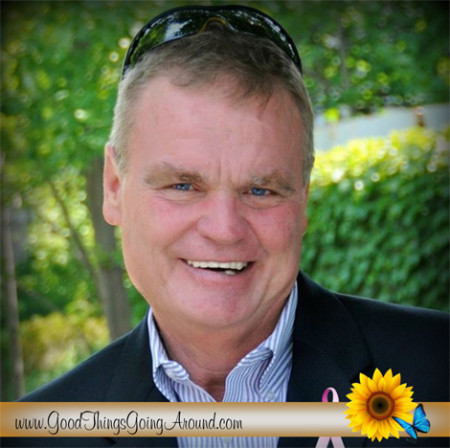 from it.
from it.
February 4th 2016 passed and I completely forgot that 29 years ago in 1987, I was in the North Carolina Jay Cee Burn Center and the surgeons were amputating my left hand. About one month later, they had to amputate my right hand as a result of injuries I sustained in an electrical accident. I was working a “real job” as my dad use to say in between acting and singing jobs. I had started playing piano at age three, started lessons at four and took lessons continuously for 17 years. And now after spending over half my life studying piano, at age 30 I would never play again. That day started me on a road that I never intended to take and down a path that has been filled with the perils and rewards of living with a disability.
First I have to say, I am not here to inspire you. I have lost count of the number of strangers that approach me in public while shopping or pumping gas to tell me that I am an inspiration. I guess they mean well, but they are just sort of congratulating me for getting up that morning and remembering to put my pants before I left the house. There is nothing inspirational about pumping gas or grabbing a can of green beans off the shelf. I am here to tell you that you have been lied to about disability. Most people believe that because you have a disability that your life is worse; that being a disabled person is a bad thing and that if you live with the disability, it makes you exceptional. Living with a disability is not a bad thing and it certainly doesn’t make you exceptional or inspirational.
Unfortunately, with the rise of FaceBook, InstaGram and Twitter, this falsehood endures and is reinvigorated by pictures of a child running on carbon fiber blades with the words “ Your excuse is invalid,” or a person using a wheelchair and the words, “Before you quit, try.” Or a person with Downs Syndrome smiling and the words, “The only disability in life is a bad attitude.” There are many more and I know you’ve seen them. It’s what I call inspirational porn. You may snicker, but I use the word “porn” purposefully, because these images belittle and objectify one group of people for the sole benefit of another group of people. In the examples above, we are trivializing and objectifying disabled people for sole benefit of non-disabled people. The only purpose of these images is to motive you, to inspire you so that when you look at them you can think, “no matter how bad my life is right now, it could be worse. I could be that disabled person with no legs or I could be that person in a wheelchair.” It’s all there to make you lessen your problems or put your worries in perspective.
Life as a person with disabilities can be somewhat difficult and we do have to overcome some things. But it’s not the things that you may think. It’s not the things to do with our bodies that we have to overcome. Now, I have used the terms “people with disabilities” and “disabled people” decisively because I believe in what’s called the “social model of disability.” It states that disability is caused by the way society is structured, rather than by a person’s impairment or difference. It looks at ways of removing barriers that restrict life choices for disabled people. When barriers are removed, disabled people can be independent and equal in society, with choice and control over their own lives.
This model not only applies to society, but should also apply to the entertainment industry as well. With the recent swell of diversity dialogue spurred by the Oscars So White the most underrepresent group, Performers With Disabilities, (PWDs) has not even been mentioned in the conversations. The USC Comprehensive Annenberg Report on Diversity in Entertainment was released which frames its findings of significant gender and racial gaps as an “inclusion crisis” and an “epidemic of invisibility,” and completely failed to measure the appearance and inclusion of PWDs. This report represents comprehensive? Inclusive?
In 2015 GLADD’s report, “Where We Are On TV,” it stated less than 1% of characters on television were portrayed with disabilities. The actual number of PWD actors working the roles is even less, with most roles done by able body actors. Current statistics show there are over 58 million people or nearly 20% of the population in the US with some form of disability while a recent study conducted by Neilson established that people with a disability represent $1 Trillion dollars in discretionary income spending, yet their depiction in television is less than 1%. PWDs cross all races, ethnicities, genders, age and sexual orientation. It’s not an exclusive club, but something you could join in the blink-of-an-eye.
Next year, I will have been using my prosthetics for as long as I had my hands. Half of my life wearing hooks. Do they replace my hands? No, but they are a tool I’m forced to use for maintaining my independence in a society designed for able body people; a tool for me to pump my gas or load my grocery cart. I’ve learned to use my prosthetics to best of my ability, just as many of you have by using your hands or your body. So this takes me back to those kids in the pictures we see littered around on all our social media. They are not doing anything out of the ordinary or exceptional. They are just using their bodies to the best of their ability. Is it fair that we objectify those kids in those images and trivialize them using their bodies to the best of their abilities by sharing those memes?
I know when people tell me, “I’m an inspiration” that they mean it as a compliment. I do understand that, but the reason it happens is because of this lie, this falsehood that’s been sold to the public that disability makes you exceptional and makes you inspirational. I’m sorry; but honestly, it doesn’t. I really believe that this falsehood, that this propaganda that we’ve been sold is the greatest injustice. It makes life hard for us. Oh, and that quote about “the only disability in life is a bad attitude,” is total bullshit. It’s just not true. No amount of me smiling at a piano keyboard with a positive attitude will allow me to play as I used to touch the ivories with ten fingers.
I want to live in a society where someone with a disability is not the exception, but accepted as a norm. I want to live in a society where a man stuffing a grocery cart is not an inspiration just because he is using prosthetics. I want to live in a society where we don’t have such low expectations of people with disabilities that we congratulate them for getting out of bed and remembering to put on pants. I want to live in a society where we place value on genuine achievement by disabled people.
And remember the social model of disability? When barriers are removed, disabled people can be independent and equal in society, with choice and control over their own lives. I want to live in a society where I can be the PWD actor that is hired for the “dad” role, the “banker” role, the “hero” role and he just happens to be missing arms and that’s the norm. I want to work in an entertainment industry where disability is not the real “inclusion crisis” and the true “epidemic of invisibility.
CINspirational People: David Perry
CINspirational People is my feature where I share stories of diverse people’s lives from our Cincinnati region. David Perry is someone who I met through work, and am connected to on Facebook. Martin Luther King Jr. Day is a holiday that has unique significance to David’s life. He wrote about it, and about how he hopes his story will inspire others. Please read about David below.
It was Martin Luther King day 24 years ago when I suddenly became totally blind due to Detached Retina. As I look back on the last 24 years of my life, I consider myself beyond blessed to have so many abilities, such as cooking, holding down a job, driving so many people crazy, and so much more! 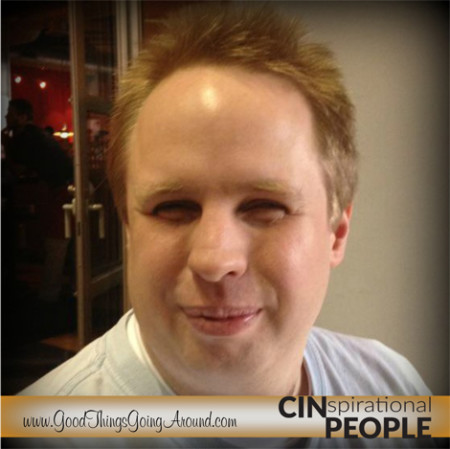 The hardest thing for me to accept, or even understand is when I am given limitations from people who don’t really understand people with blindness being over comers in so many ways! The whole truth is that people who are blind are just as vital human beings as much as people who are sighted! The real problem with blindness is not the disability itself. However, the real problem is all of the misunderstandings society has regarding blindness! Blindness doesn’t define someone’s characteristic. However, their courage and abilities to do their very best truly defines who they really are! The whole truth is we all have vision! The question is how do you choose to see life? I choose to laugh at my disability, and enjoy everything that God has given me! God has blessed me with so many wonderful friends and family throughout my life, and all of these people look great to me! Making today’s vision tomorrow’s victories, making today’s obstacles tomorrow’s opportunities, and making today’s problems tomorrow’s possibilities shines the light of beauty! The ability of being an over comer is the only way to live! Remembering January 20, 1992, the day that changed my life! Although I lost my vision from a physical perspective, I gained vision in so many other regards! The eyes in my heart see all, and this kind of vision is the best! Enjoy your day!
The hardest thing for me to accept, or even understand is when I am given limitations from people who don’t really understand people with blindness being over comers in so many ways! The whole truth is that people who are blind are just as vital human beings as much as people who are sighted! The real problem with blindness is not the disability itself. However, the real problem is all of the misunderstandings society has regarding blindness! Blindness doesn’t define someone’s characteristic. However, their courage and abilities to do their very best truly defines who they really are! The whole truth is we all have vision! The question is how do you choose to see life? I choose to laugh at my disability, and enjoy everything that God has given me! God has blessed me with so many wonderful friends and family throughout my life, and all of these people look great to me! Making today’s vision tomorrow’s victories, making today’s obstacles tomorrow’s opportunities, and making today’s problems tomorrow’s possibilities shines the light of beauty! The ability of being an over comer is the only way to live! Remembering January 20, 1992, the day that changed my life! Although I lost my vision from a physical perspective, I gained vision in so many other regards! The eyes in my heart see all, and this kind of vision is the best! Enjoy your day!
